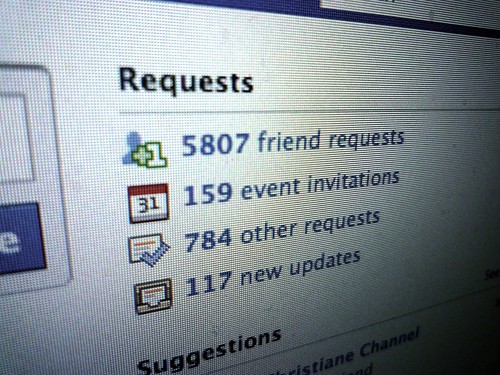Friending on Facebook
In our previous post, Use Facebook Professionally, we continued our series on Facebook by going in depth about how to use Facebook for your professional needs.
In this post, we continue on with our discussion with a look at how to friend people on Facebook and how to manage your friends once they’re established.
Friending on Facebook
After you’ve set up your profile, of course you’ll need some friends. Friending on Facebook is a little different from other social networks in that you may not be able to see very much detail about the person you’re trying to friend. On the other hand, due to the changes in default privacy settings we detailed in an earlier section, this problem may be less of an issue these days.
At any rate, this is a problem whether you are searching for friends to connect to, or evaluating friend requests from others, and it’s especially difficult if you or your potential friend have a common name. The following figure shows the small amount of information you can see about members who are protecting their privacy.
Figure 58 — Limited Information Available for Potential Friends on Facebook
Based on this information, would you accept a friend request from Doug?
However, since you’re using Facebook for your enterprise, you need to determine your policy for making or accepting friend requests. While it may seem like a good idea to accept all friend requests, remember that these friends have the ability to comment on your status or other activities on Facebook. If they are opposed to your company, are a troll, or otherwise disruptive, you may be forced to unfriend them, so you’ll need a policy for that as well. Plus, you’ll need to assign someone to monitor your stream and your Like page.
Another reason to choose your friends wisely is the fact that friends can see information about your other friends. Thus you could be the victim of guilt by association, especially if unsavory friends have completely public Facebook profiles, perhaps featuring equally unsavory pictures and comments. Add this to the fact that online customer relationship management software vendor Salesforce.com has a module called Faceconnector[1] that can look you up and see who your friends are, as well as their public information. Perhaps now it’s clear why we made a big deal about privacy earlier in this chapter.
Finding Friends on Facebook
Like a lot of social networks, Facebook will allow you to upload your email contact lists and will use them to suggest contacts who are already on Facebook, and allow you to invite those who are not.
If you don’t want to do this, Facebook does have a search function that lets you search for people to connect with. Of course, if the people you target have non-public profiles, and common names, this could lead to having to message several “Doug Smiths” to see which one is the one you know. Unlike LinkedIn, there is no penalty for spamming people with friend requests. The recipients can select Ignore if they aren’t interested in connecting.
Your friends can also suggest friends and Facebook will often nudge you with messages in the right column of your main page, suggesting that you help a friend connect with more people.
Grouping Friends
Facebook has a feature that allows you to categorize your friends into groups you can create and name. You can then view a custom News Feed by group and also message all friends in a group.
Typically people may have, for example, a group for family, one for friends, and one for business connections. You can create a group from your Friends page, by selecting the Create a List Button.
To create the group from your Friends page, select the Create a List Button.
You see a form to give the group a name and to select existing friends to add to the group. The group will appear on the left taskbar of your Facebook home page under the Friends heading. Selecting it shows a custom New Feed of the group’s activity.
Next up: Building Relationships on Facebook
Friending on Facebook is the 122nd in a series of excerpts from our book, Be a Person: the Social Operating Manual for Enterprises (itself part of a series for different audiences). We’re just past page 328. At this rate it’ll be a long time before we get through all 430 pages, but luckily, if you’re impatient, the book is available in paper form at bit.ly/OrderBeAPerson and you can save $5 using Coupon Code 6WXG8ABP2
Get our new book, The Infinite Pipeline: How to Master Social Media for Business-to-Business Sales Success online here. You can save $5 using Coupon Code 62YTRFCV
What Others Are Saying
“Infinite Pipeline offers practical advice for using social media to extend relationship selling online. It’s a great way to get crazy-busy prospects to pay attention.”
—Jill Konrath, author of SNAP Selling and Selling to Big Companies
“Sales is all about relationships and trust. Infinite Pipeline is the ‘how to’ guide for maximizing social networks to find and build relationships, and generate trust in our digital age.”
—Sam Richter, best-selling author, Take the Cold Out of Cold Calling (2012 Sales book of the year)
“Infinite Pipeline will be the authority on building lasting relationships through online social that result in bottom line business.”
—Lori Ruff, The LinkedIn Diva, Speaker/Author and CEO of Integrated Alliances
[1] Faceforce’s Faceconnector demo: bit.ly/boAZK7








